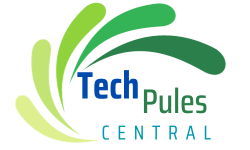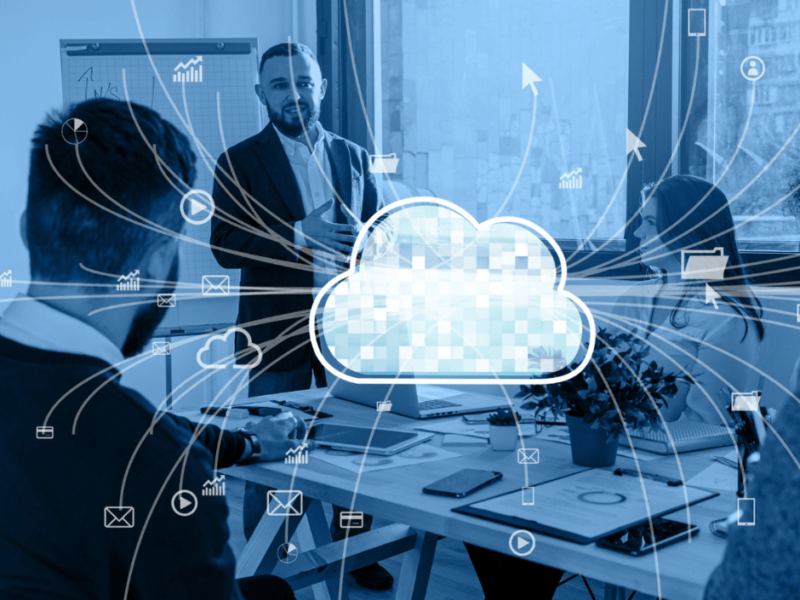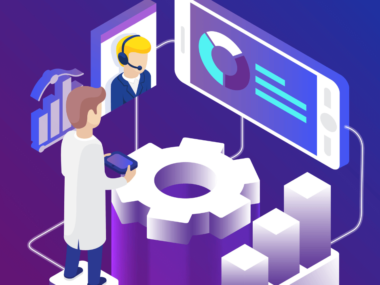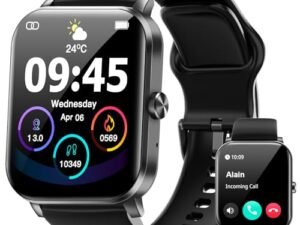Edge computing vs cloud computing are two popular terms in technology. They are increasingly gaining popularity.
These two technologies are often compared and contrasted. What are they exactly? How do they differ?
Cloud computing delivers various computing services over the internet. These services include servers, storage, databases, networking, software, and analytics.
Cloud computing provides on-demand access to shared computing resources. These resources can be rapidly provisioned and released with minimal effort.
Edge computing is a type of distributed computing paradigm. It brings computation and data storage closer to the location where it is needed. This improves response times and saves bandwidth.
Edge computing is meant to solve the problems of cloud computing. It deals with issues like latency, bandwidth, security, and privacy.
It does this by processing data and running apps closer to users.
Understanding Edge Computing
Defining Edge Computing
Edge computing is a distributed computing paradigm. It brings computation and data storage closer to the location needed. It does not rely on a centralized data center.
In edge computing, data processing takes place at the edge of the network, closer to the source of the data. This can be a mobile device, IoT sensor, or any other device that generates data.
Benefits of Edge Computing
Edge computing offers several benefits over cloud computing. One of the main benefits is reduced latency. Since data processing takes place closer to the source of the data, the time it takes to process the data is significantly reduced.
Real-time processing is crucial for certain applications, like autonomous vehicles. It is also important for industrial automation.
Another benefit of edge computing is improved reliability. Edge computing can distribute computation and data storage across multiple devices. This provides a more resilient infrastructure.
This is because if one device fails, the other devices can still function and process data.
Challenges of Edge Computing
While edge computing offers many benefits, it also presents several challenges. One of the main challenges is security. Since data is distributed across multiple devices, it can be more difficult to secure.
Edge devices may have limited processing power and memory. This can make it more difficult to implement security measures.
These devices may also have limited processing power and memory. This adds to the challenge of implementing security measures.
Another challenge of edge computing is managing the infrastructure. Edge computing involves distributed devices. Managing the infrastructure can be complex. It is more complex than managing a centralized data center.
This requires specialized skills and tools to ensure that the infrastructure is running smoothly.
Edge computing provides numerous advantages compared to cloud computing. It is especially beneficial for applications that need real-time processing and low latency.
However, there are also several challenges that need addressing. These challenges are necessary for ensuring a secure and reliable infrastructure.
Understanding Cloud Computing
Defining Cloud Computing
Cloud computing is a model of delivering computing services over the internet. Users can access a shared pool of computing resources.
These resources include servers, storage, and applications. Users can access them on-demand and pay for what they use.
Users can rely on cloud providers instead of owning infrastructure. These providers deliver the services that users need.
Cloud computing services are categorized into three main types. There are three types: Infrastructure as a Service (IaaS), Platform as a Service (PaaS), and Software as a Service (SaaS).
IaaS gives users virtualized computing resources like servers, storage, and networking. PaaS provides a platform for developing, testing and deploying applications.
SaaS provides users with access to software applications over the internet.
Benefits of Cloud Computing
Cloud computing offers several benefits to users, including:
Scalability: Cloud resources can be adjusted to meet changing business needs. Users don’t need to invest in new infrastructure for scalability.
Cost-effectiveness: Users only pay for what they use. This eliminates upfront capital expenditures and reduces operational costs.
Flexibility: Cloud services offer flexibility because they can be accessed from anywhere. Users can work from any location and collaborate with others in real-time.
Reliability: Cloud providers ensure high availability and redundancy for reliability. Services are always accessible and data is always backed up.
Challenges of Cloud Computing
While cloud computing offers many benefits, it also poses several challenges, including:
Security: Storing data and applications in the cloud can raise security concerns. This is because it introduces new attack vectors and requires trust in the cloud provider’s security practices.
Compliance: Users must comply with laws and regulations when using cloud services. This includes data privacy and industry-specific regulations.
Vendor lock-in: Users may become dependent on a single cloud provider. This can make it difficult to switch providers or move applications and data to a different environment.
Overall, Cloud computing has become essential for many businesses. It offers flexibility, scalability, and cost-effectiveness to compete in today’s digital landscape.
Differences Between Edge and Cloud Computing
Data Processing
One of the main differences between edge computing and cloud computing is where data processing takes place. With cloud computing, data is processed on remote servers located in data centers.
In contrast, edge computing processes data locally on devices that are physically close to the user. Edge computing enables real-time data processing and analysis without remote server communication.
Latency
Another key difference between edge computing and cloud computing is latency. Latency refers to the time it takes for data to be sent to a server, processed, and then sent back to the device.
Latency is a significant issue in cloud computing. Applications that require real-time data processing can be affected.
Edge computing can provide much lower latency. Data is processed locally on devices close to the user.
Security
Security is another important consideration when comparing edge computing and cloud computing. With cloud computing, data is stored on remote servers located in data centers.
Ensuring data security becomes harder when it is sensitive or confidential. Edge computing offers enhanced security by storing data locally on nearby devices. These devices are physically close to the user, ensuring increased protection.
Cost
Finally, cost is another important consideration when comparing edge computing and cloud computing. Cloud computing can be costly.
This is especially true for applications that involve extensive data processing and storage.
Edge computing can be more cost-effective. It uses local devices to process and store data. Real-time data processing and analysis can be particularly beneficial for certain applications.
Edge computing and cloud computing are two different approaches to data processing and storage. In summary, they have distinct methods for handling data.
Cloud computing is great for big data processing and storage. Edge computing is better for real-time data processing and analysis.
In the end, the decision relies on application needs and resources. Specifically, it’s about choosing between edge and cloud computing.
Use Cases of Edge and Cloud Computing
Edge Computing Use Cases
Edge computing is ideal in situations where real-time data processing and analysis is required. Here are some examples of edge computing use cases:
Smart homes: Edge computing is useful in smart homes. It processes data from different devices and sensors. These include smart thermostats, doorbells, and security cameras. The data is processed locally, reducing latency and improving response times.
Autonomous vehicles: Autonomous vehicles rely on edge computing. They process data from lidar and radar sensors. The data is processed locally, reducing latency and improving response times.
Industrial IoT: Edge computing can be used in the industrial IoT to process data from various sensors and machines. The data is processed locally, reducing latency and improving response times.
Cloud Computing Use Cases
Cloud computing is ideal in situations where large amounts of data need to be stored and processed. Here are some examples of cloud computing use cases:
Big data analytics: Cloud computing can be used for big data analytics, where large amounts of data need to be processed and analyzed. Cloud computing provides scalability, allowing organizations to easily adjust computing resources. It also offers flexibility, enabling them to scale up or down as needed.
Software as a Service (SaaS): Cloud computing can be used for SaaS applications, where software is delivered over the internet. Cloud computing provides scalability and flexibility. Organizations can easily adjust computing resources. They can scale up or down as required.
Disaster recovery: Cloud computing can be used for disaster recovery, where data is backed up to the cloud. Cloud computing offers reliability and redundancy, ensuring that data is safe and accessible in the event of a disaster.
Conclusion
In conclusion, edge computing and cloud computing have unique advantages. Each has specific use cases. Edge computing is best suited for tasks that require real-time processing and low latency, such as IoT devices.
Cloud computing is perfect for tasks needing huge processing power. It is also great for tasks requiring large storage capacity. Examples of such tasks include big data analytics.
When deciding which computing paradigm to use, it is important to consider the specific needs of your application.
If you require real-time processing and low latency, then edge computing is likely the best choice.
However, if you need massive processing power and storage capacity, then cloud computing is likely the way to go.
It is also worth noting that edge computing and cloud computing are not mutually exclusive. In fact, they can work together in a complementary fashion. For example, edge devices can work in unison with cloud servers.
Leveraging the efficiency and power of edge computing with the ease and availability of cloud-based servers.
Both edge computing and cloud computing are vital in modern computing.
By understanding the differences between the two, you can make informed decisions about which one to use for your specific needs.
Frequently Asked Questions of Edge Computing vs Cloud Computing
How does edge computing differ from cloud computing?
Edge computing and cloud computing differ in terms of where data processing takes place. In cloud computing, data is processed in a centralized location, typically a data center.
Edge computing, on the other hand, processes data closer to where it is generated, at the edge of the network.
Edge computing can provide faster processing times and lower latency. This is important for applications that require real-time data processing.
What are some applications of edge computing?
Edge computing has many uses. These include autonomous vehicles, smart cities, industrial automation, and healthcare.
Autonomous vehicles use edge computing to process sensor data in real-time. This helps the vehicle make quick and safe decisions.
In smart cities, edge computing is used to process data from sensors and cameras to improve traffic flow and reduce congestion.
What are the benefits of edge computing?
There are several benefits to using edge computing. It can offer faster processing times for real-time data processing. Additionally, it can reduce latency, which is crucial for certain applications.
Second, it can reduce the amount of data that needs to be sent to the cloud, which can save on bandwidth costs. Finally, it can improve data privacy and security by keeping sensitive data closer to the source.
Will edge computing replace cloud computing?
Edge computing is not likely to replace cloud computing, but rather complement it. Edge computing offers faster processing times and reduced latency. Cloud computing offers scalability and flexibility.
In many cases, a combination of edge and cloud computing is used to provide the best of both worlds.
What is the difference between edge computing and on-premise computing?
On-premise computing is done locally, on-site within an organization’s data center.
Edge computing, on the other hand, refers to computing that is done at the edge of the network, closer to where data is generated.
Both on-premise and edge computing involve local processing of data. Edge computing is specifically focused on real-time data processing.
On the other hand, on-premise computing focuses on processing data locally for long-term storage and analysis.
Can you provide an example of edge computing?
An example of edge computing is a smart thermostat. A smart thermostat uses sensors to collect data on temperature, humidity, and occupancy.
This data is processed locally, at the edge of the network, and used to make real-time decisions about heating and cooling.
The smart thermostat processes data locally. It responds quickly to temperature and occupancy changes. This provides more efficient heating and cooling.








